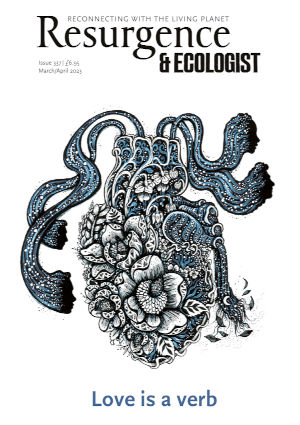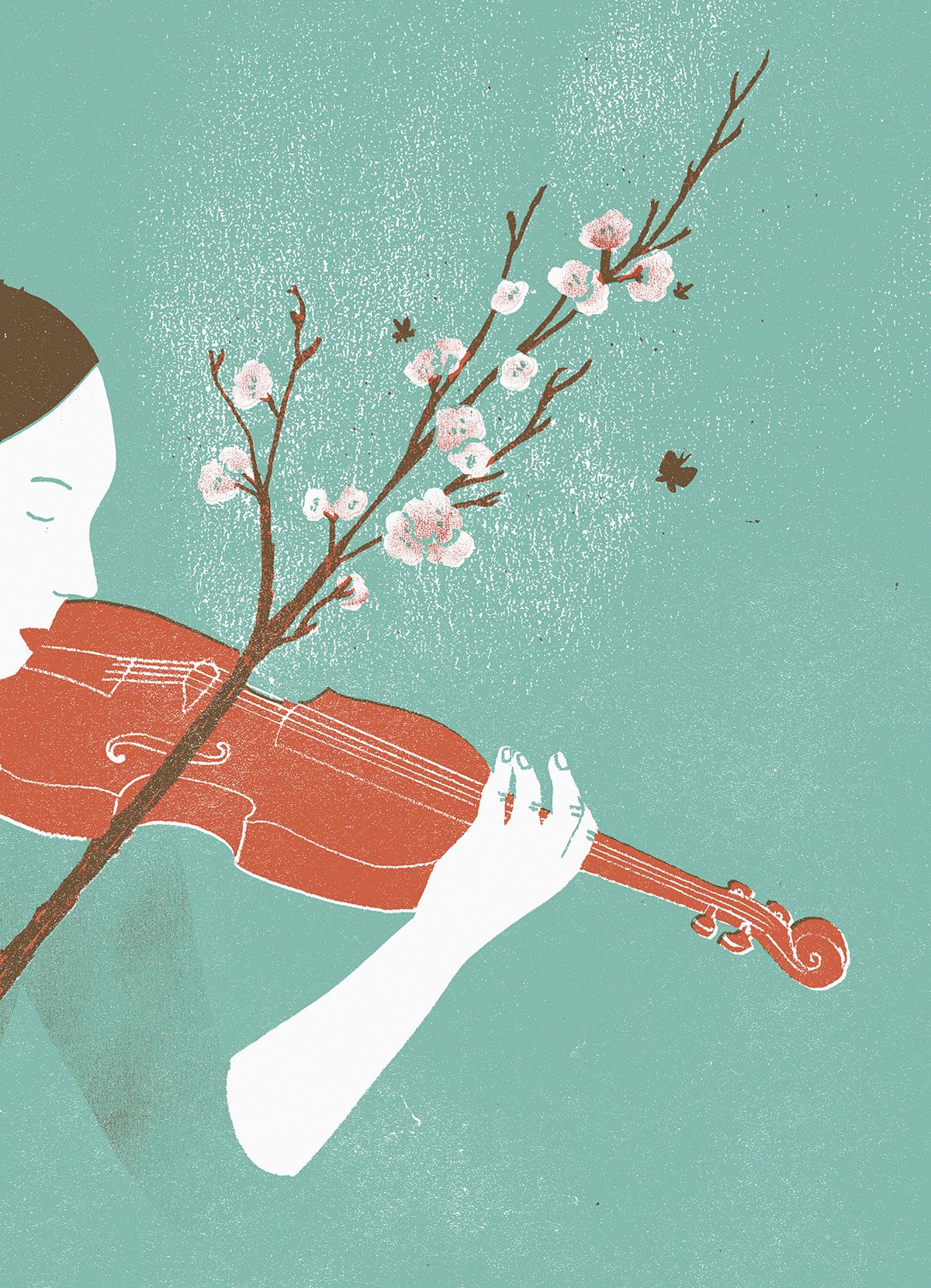“Imagine you’re walking through a forest of beautiful snow-topped trees and you notice a set of tiny DIY houses made from recycled margarine tubs, broken terracotta pots and glitter, and then you see an ornately whittled wooden piano set upon a tree stump. Imagine all the eager little pilgrims who have set out in the snow just to catch a glimpse of this mystical, mysterious piano...”
This is Lizzy Hardingham’s account of the inspiration behind her song ‘Piano in the Woods’, one of the tracks on her new album How Did We Get Here? Hardingham admits the stress of a house move during lockdown, coupled with a yearning to attend music festivals (at that time forbidden) may have influenced this dream-like hymn to live music, community and Nature. How Did We Get Here? is her exploration of the relationship between music and mental health.
Recent decades have seen a growing interest in the use of music to enhance mental wellbeing. Music therapy and community-based ‘music for health’ projects are two aspects of this movement, where the emphasis is less on musicianship and more on using music as a vehicle for self-expression and bringing people together. As the facilitator of improvisational music workshops for mental health service users, I have witnessed first-hand the mental health benefits of music making. The participants might or might not ever have played an instrument but would regularly meet up to create the most amazing music and then leave the session afterwards feeling more confident and relaxed.
But what happens to our mental health when we can’t get together to sing or make music? When we can’t attend concerts, folk clubs or festivals? When audiences are prevented from enjoying live music, and musicians from performing? Of course, this was exactly the situation in which we found ourselves with the coronavirus pandemic and subsequent succession of lockdowns.
Many musicians, suddenly unable to tour, turned the threat into an opportunity by focusing on songwriting or by home-recording intimate, stripped-down albums that were slowly released into the world as the music-loving public emerged from its social isolation.
Hardingham took a more novel approach, developing a project that documented the experiences of musicians and audiences through those challenging times. “During the isolation of the pandemic and lockdown, everybody was turning to creative activities – gardening, colouring books, baking sourdough bread – everybody was doing something creative, and for a lot of people that something took on a musical form,” she says.
She already had a collection of what she describes as “really vulnerable songs” and wanted to create a cohesive narrative about the relationship between mental health and music, to join the growing conversation about mental health and wellbeing.
The concept became clearer when she spoke with fellow musician Minnie Birch, whose album You’re Not Singing Anymore celebrates the tradition of singing on football terraces. Birch had woven interview clips into the music, and this innovation became a template for Hardingham’s new album, with the result that, alongside her eight thematically linked songs, How Did We Get Here? skilfully interweaves thought-provoking audio clips from interviews with music professionals, mental health charities and music therapists.
The interviewees include musicians who had also worked in health or care settings, and songwriters who discuss mental health in their own songs. One of those Hardingham interviewed was musician and journalist Tom Ryder, who has a diagnosis of bipolar disorder. Ryder is the founder of the mental health charity Retune, which provides wellbeing workshops, live shows, and resources, including a system called SCALES. According to the Retune website, “SCALES uses six ‘strings’ to keep your mental wellbeing in tune,” the six ‘strings’ being Sleep, Creative, Active, Listen, Earth and Social.
As Retune points out, the Earth ‘string’ has two meanings. In one sense, it’s about engaging with the environment around us, reminding ourselves we need to spend time nurturing our relationship with Nature by being outdoors and connecting with our roots. The second meaning is about “keeping our feet on the ground and appreciating the simple things, so that we are literally ‘earthed’. Breathing exercises, mindfulness, meditation and yoga can help to achieve this.” Importantly, Retune also acknowledges that sometimes self-care strategies are not enough and a mental health crisis – which, extending the metaphor, they refer to as ‘a snapped string’ – may require professional intervention in the form of medication and/or therapy.
Another organisation involved with Hardingham’s project was Help Musicians, a charity for professional musicians of all genres. This organisation provided a grant that part-funded the album and also offered Hardingham mentoring from music professionals and access to wellbeing workshops targeted specifically at musicians.
Some of the people Hardingham interviewed for her project spoke about the unexpected positives of lockdown. For example, live-streamed online gigs improved access for some, allowing people with disabilities and those with caring responsibilities to ‘attend’ concerts they would otherwise miss.
Along with the physical album, there is a set of online video interviews on the themes of creativity, touring, Nature, togetherness and technology – because as well as being a musician, Hardingham is a librarian. She points out that many musicians have second jobs they really don’t enjoy, so she considers herself lucky to be able to work in something she loves as much as her music. And she sees parallels between librarians and folk singers: “There’s a lot of crossover because both are about information, storytelling and helping people.” Through sharing information and telling stories about mental health through the medium of music, Hardingham’s project is certainly helping people to continue this important conversation.







